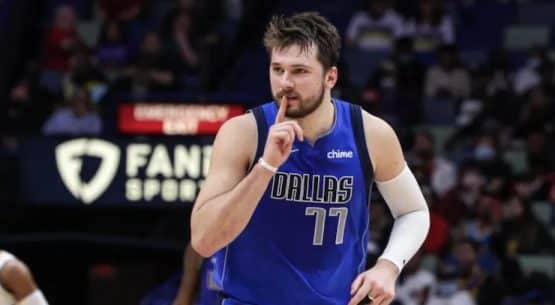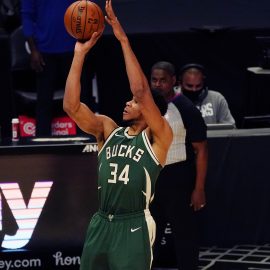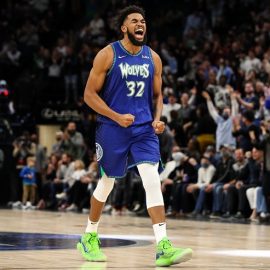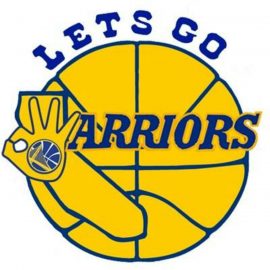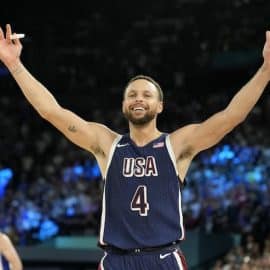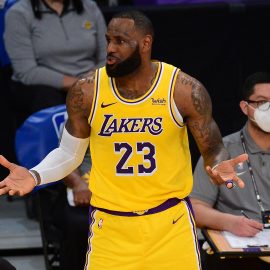The Los Angeles Lakers had one of the busiest offseasons in the league, drafting Brandon Ingram and Ivica Zubac, signing – or overpaying to many – Timofey Mozgov and Luol Deng to four-year contracts and hiring former Los Angeles forward Luke Walton to man the head coaching position. After several seasons of hardship on and off the floor, the Lakers appear to be on the right track.
However, there has been one question that lingers as the season draws near: Where are we going with Julius Randle?
After missing most of the 2014-15 season to a broken leg, Randle returned last season and much like the rest of the Lakers, was swept under the rug as Kobe Bryant finished up his Hall of Fame career. Randle finished his first full season with averages of 11.3 points, 10.2 rebounds and 1.8 assists in 80 total starts. At 21 years old, that would be considered a good season on the surface.
But that didn’t stop from the Los Angeles Lakers from bolstering their frontcourt. Mozgov and Zubac are two players expected to spend the majority of their time at the center position, while Deng and Randle could see some time at power forward. Throw in second-year forward Larry Nance Jr., Yi Jianlian, Tarik Black and recent signee Thomas Robinson, and Los Angeles’ frontcourt is extremely crowded.
Randle’s performance wasn’t as impressive as the stat line suggested either. Randle finished with a true shooting percentage of 48.2 percent, one of the worst marks for qualified players. Defensively, Randle was a sieve; the Lakers were almost 10 points better – 104.2 defensive rating off, 113.0 rating on – with Randle off the floor. And lastly, Randle shot 27 percent from beyond the arc. The double-doubles hid Randle’s lack of efficiency and brutal defensive ability.
At the moment, Randle seems more like a sell-high option to a team that just values the raw statistics and hope of upside rather than actual value. If you want to go a step further, Larry Nance Jr. seems more like a valuable player thanks to his ability to play both frontcourt positions and defend the rim. Though neither can truly shoot, Nance’s ability to affect the game defensively allows him to stay on the floor.
Can Randle turn this around?
The first thing is for Randle to find his sweet spot on the offensive end. Working mostly around the rim, Randle shot just 58 percent and was blocked on 14 percent of his “close” shots, via 82games.com. He has a solid handle, which allows him to attack the rim against smaller big men and small-ball fours. However, he shot just 39.9 percent on those as well, so perhaps moving away from the rim can fix this dilemma?
Shooting just 36 total three-pointers last year, Randle extending his range should help his value in the pick-and-roll. With D’Angelo Russell and Jordan Clarkson on the roster, the pick and roll will be vital to the offense. Never expected to be an impactful shooter, Randle becoming a solid shooter from the corner or improving on above the break threes (31.3 percent last year) would allow him to be more of an asset in the pick and roll.
Defense is much tougher for Randle to improve. At six-foot-nine, Randle has solid size for defending power forwards, but he’s undersized against centers. In an ever-evolving game where small forwards are sliding up a position, that forces Randle to defend more perimeter-oriented players. He’s been fine so far, but not great. Defending spot-up plays, Randle “held” opponents to 1.07 PPP and 40 percent shooting – finishing in the 25th percentile.
Move in closer, and you see that Randle had most of his troubles defending the rim. Via Nylon Calculus, Randle finished last season with the fifth-worst field goal percentage allowed at the rim – 57 percent – ranking among the likes of Ersan Ilyasova, Harrison Barnes, and Andrea Bargnani.
One way to help Randle on defense is by surrounding him with smarter defenders. Guys like Deng and Nance Jr. are more active defenders who can cover multiple positions. Ingram is years away from that level but potentially wields that ability. Last year, he had success with Larry Nance Jr, finishing with a 4.2 net rating together when they shared the floor.
Randle has fans and detractors, and rightfully so. With defined weaknesses though, Randle has the ability to correct those shortcomings and become a solid player. On the other hand, those two weaknesses – three-point shooting and defense – are tough to correct, let alone become good at when you’re at the point Randle is in his development.
With a new head coach and better defensive players around him, the 2016-17 season will be an interesting test for Randle. If he can improve on his two main weaknesses, then his spot as a key cog in Los Angeles’ future will be secure. However, if he continues to struggle, then the Lakers will have to figure out if Randle is a fit for the future or merely a potential trade piece.
Add The Sports Daily to your Google News Feed!
